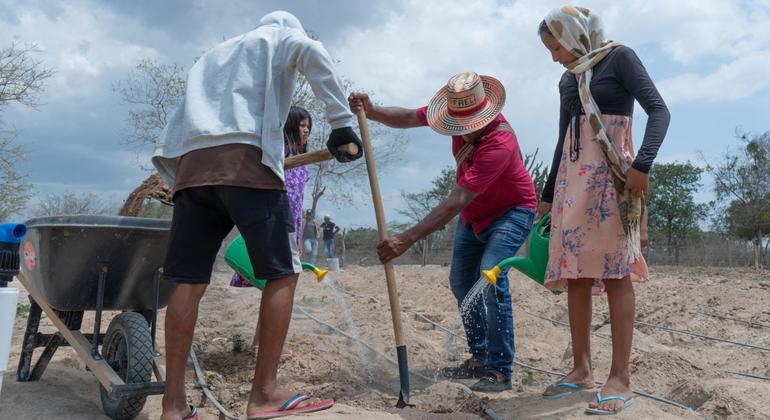Natural disasters have had a devastating impact on global agriculture, with estimated losses of 3.26 trillion dollars over the past 33 years. This figure, which represents an average of 99 billion dollars annually, is equivalent to 4% of the world’s agricultural GDP. These alarming statistics were presented in a recent report by the Food and Agriculture Organization of the United Nations (FAO), which also highlighted the increasing use of digital technologies by farmers and governments as a way to manage risks and protect the livelihoods of affected communities.
The report addresses the impact of phenomena such as droughts, floods, and pests on food production, as well as on agricultural incomes and population nutrition. According to the FAO, digital innovations are enabling a transition from reactive to proactive management, focusing on resilience strategies based on accurate data. Qu Dongyu, director-general of the FAO, emphasized that these technologies are transforming the way risks are monitored, early warnings are issued, and decisions are supported in the agricultural sector.
Between 1991 and 2023, disasters have destroyed 4.6 billion tons of cereals, 2.8 billion tons of fruits and vegetables, and 900 million tons of meat and dairy products, resulting in a daily per capita reduction of 320 kilocalories, affecting between 13% and 16% of the average population’s energy requirements. Asia turns out to be the most affected region, accumulating 47% of the losses, equivalent to 1.53 trillion dollars, due to its high agricultural production and exposure to extreme weather events. Latin America follows with 22% of the losses, while Africa experiences a proportionally greater impact, with 7.4% of its agricultural GDP compromised, severely affecting food security and rural stability.
In addition, Small Island Developing States face special vulnerability due to cyclones and floods, points that jeopardize their limited agricultural production. Regarding fishing, marine heatwaves, between 1985 and 2022, have caused approximately 6.6 billion dollars in losses, affecting 15% of the world’s fishing, a vital sector for many coastal communities.
The report also highlights the importance of artificial intelligence tools, drones, and remote sensing technologies, which allow for improved alerts and real-time advice to farmers. However, there remains a significant challenge as 2.6 billion people continue to be disconnected, many of them in disaster-prone rural areas.
The FAO states that digital transformation must be accompanied by initiatives that strengthen local capacities and institutional frameworks, as well as public policies that ensure access to these technologies for vulnerable groups, such as women, youth, and small producers. To achieve this, the collaboration of governments, international partners, and the private sector is being requested to promote digital innovation and strengthen agri-food systems, all in search of greater resilience against the challenges presented by a constantly changing climate.
via: MiMub in Spanish
